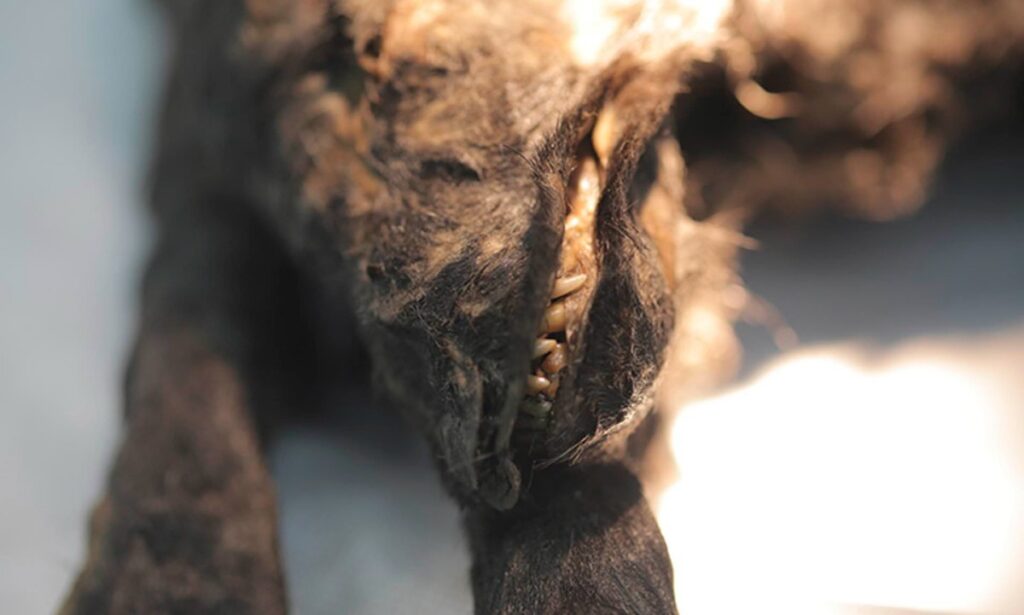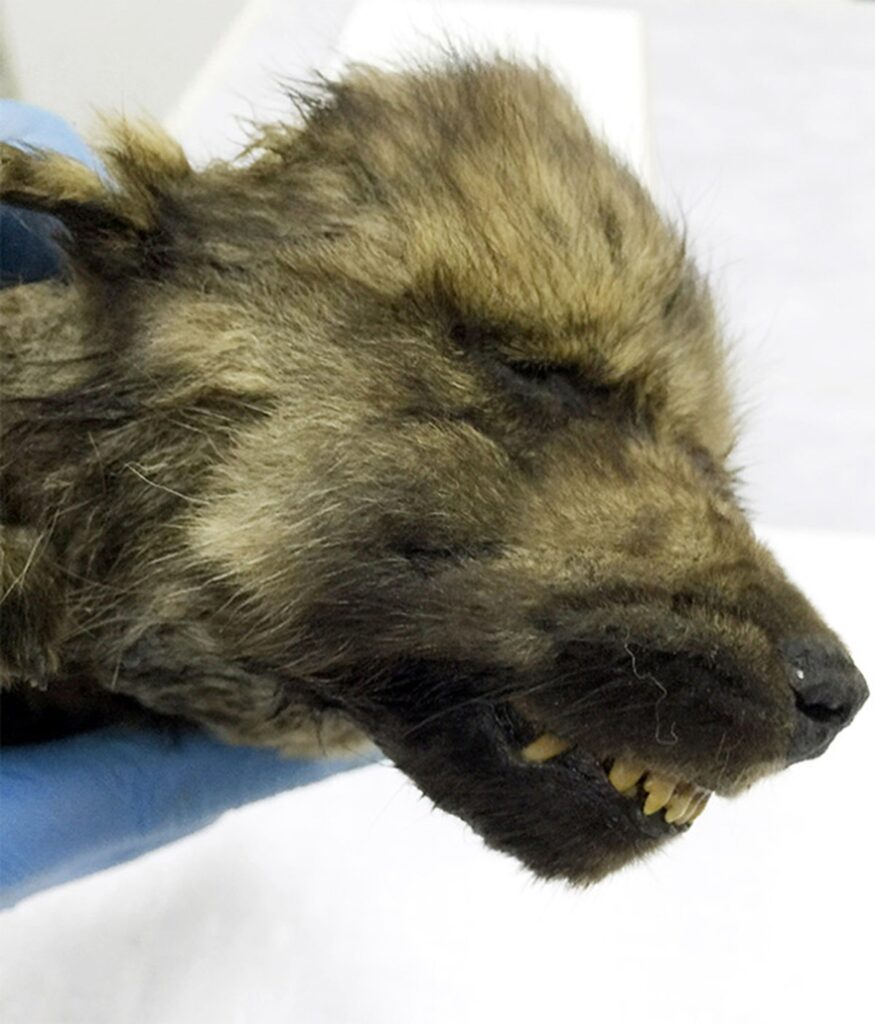
8000 Year Old Puppy Frozen in Permafrost Puzzles Scientists
An astonishing discovery has emerged from the depths of Siberian permafrost – an 18,000-year-old puppy named Dogor, which translates to ‘friend’ in the Yakut language. Unearthed by locals near the Indigirka River in the summer of 2018, this prehistoric pup’s remains have left researchers perplexed due to genetic testing revealing a surprising revelation – Dogor is neither purely a wolf nor an ordinary dog. Instead, he might just be a cryptic ancestor, bridging the gap between these two iconic species.

The remarkable preservation of Dogor’s physical attributes, including his entire body, luxuriant coat, muzzle, whiskers, and even eyelashes, was made possible by the unyielding embrace of permafrost. Researchers at the Centre for Palaeogenetics in Sweden seized this unique opportunity, extracting and sequencing DNA from a fragment of the pup’s rib bone. Despite meticulous analysis, the team found themselves stymied by a profound question – was Dogor a dog, a wolf, or perhaps an enigmatic amalgamation of the two?
David Stanton, a research fellow at the Centre for Palaeogenetics, conveyed the challenge to CNN, stating, “It’s normally relatively easy to tell the difference between the two. We have a lot of data from it already, and with that amount of data, you’d expect to tell if it was one or the other. The fact that we can’t might suggest that it’s from a population that was ancestral to both dogs and wolves.”

Intriguingly, Dogor’s ambiguous identity might find its roots in the juncture of canine domestication. Stanton hypothesizes that this remarkable pup resides within a pivotal chapter of canine evolution. A time when ancestral wolf species were dwindling, and the embryonic stages of early dogs were just starting to take shape. As the timeline winds backward and converges, distinguishing between the two becomes increasingly intricate.
The precise narrative of the divergence between dogs and wolves remains veiled in uncertainty. While a consensus exists among scientists that modern dogs and gray wolves trace their origins to a common ancestor between 15,000 to 40,000 years ago, the intricate process of how dogs transformed from wild counterparts to human companions is shrouded in ongoing debates. The question of where this transformation initiated geographically sparks its own discussions, with possible origins pinpointed in Mongolia, China, and Europe.

Theories surrounding this intimate human-animal connection also diverge. Some propose that humans actively domesticated wolf pups, molding them into canine companions. Alternatively, a notion suggests that a subset of naturally less aggressive wolves chose proximity to humans, cultivating a harmonious association over time.
Amidst this puzzling panorama, Dogor’s ancient DNA emerges as a beacon of hope, promising insights that could unravel the mysteries enshrouding canine evolution. The research team plans to conduct a third round of DNA testing, potentially shedding light on Dogor’s precise place within the intricate tapestry of the canine family tree.


As we contemplate the enigmatic journey of Dogor, a larger narrative unfolds – the impact of climate change on Siberia’s frozen relics. With the encroachment of warming temperatures upon permafrost, it’s increasingly likely that more ancient inhabitants of our planet will be liberated from their icy tombs, bestowing upon us the opportunity to glimpse the distant past in ways we could never have imagined.

Leave a Reply